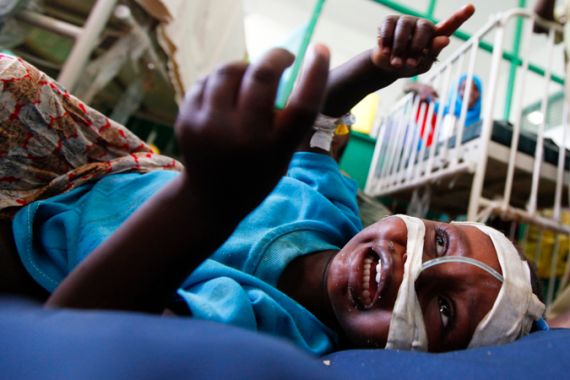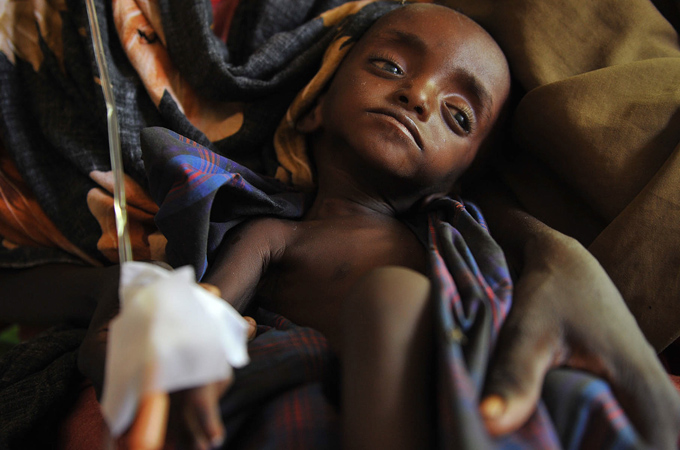Allow poor to define their futures
Despite an increase in middle income countries, new plans and methods that are well researched are desperately needed.

 |
| Despite the fact that 72 countries accelerated on extreme poverty and hunger, many are still struggling for survival [EPA] |
New York, NY – Over one billion of us live without many of the basics that the other six billion take as given. In the least-developed countries, conflict, disaster and broader human insecurity impose structural limits on efforts to move from crisis to risk reduction and from growth to sustained development. Although 28 countries have moved from low-income status to middle-income status, with Ghana and Zambia among the newest Middle Income Countries (MICs), an estimated 800m people still live in low-income countries, while 2/3 of the global poor now live in the MICs (UNDP, IPC-IG). Many millions have been lifted out of poverty in the last 10 years, including 26m Brazilians who made the transition out of poverty between 2004 and 2009. The rate of progress towards the Millennium Development Goals (MDGs) has improved in a number of developing countries, with 13 of the top performers being least-developed countries, many from Sub-Saharan Africa. Seventy two countries accelerated their rate of progress on extreme poverty and hunger. Deceleration was notable on environmental sustainability.
Significant and sustained progress will require faster and better efforts. Beyond the critical issues of ‘carbon footprints’, ‘low-carbon development’,’ green economy’ and the economics behind saving the planet, we must draw attention back to the continuing challenge of ensuring that growth and development deliver for and with the poor and vulnerable. In its many forms – energy poverty, lack of access to water and sanitation, malnutrition or insecure access to food and lack of access to education and health – the scale and scope of global deprivation call current development policy and practice into question.
Keep reading
list of 4 itemsLost Futures
Photos: Greek valley that became a lake stirs drought debate
Botswana threatens to send 20,000 elephants to Germany
The continuing decline of the quantity and quality of natural resources and of ecosystem functions is likely to exacerbate the likelihood of conflict over resources, particularly water. According to UNDP’s Bureau for Crisis Prevention and Recovery, 35 countries had entered what could be designated a ‘post-conflict phase’ by 2008. The cost of conflict has been enormous, matching or surpassing, according to some estimates, the value of the Official Development Assistance (ODA) received in the last 20 to 30 years in the same countries.
Social inclusion
As a contribution to the dialogue around next year’s Rio+20 UN Conference on Sustainable Development and to the ongoing discussions around a post-2015 MDG Agenda, the UNDP Brasilia-based International Policy Centre for Inclusive Growth (IPC-IG) launches a special issue of its Poverty in Focus magazine linking future development to sustainability and particularly to social sustainability. The message of this publication is that, “For growth to be inclusive, it must be sustained and sustainable and that, for it to be sustained and sustainable, it must also be equitable”. Growth, gender, poverty and the environment can no longer be treated as loosely connected components of development. Recognising their interdependence is at the core of improved and sustained development for all.
In view of the high expectations placed on the Rio+20 meeting, let us remind ourselves that ‘social sustainability’ will be built on the foundations of productive and social inclusion. Too often, the focus has fallen largely on productive inclusion, with limited effort to address the structural factors that cause and sustain exclusion and marginalisation, be they related to gender, political processes, property rights for the poor and so on.
The ‘software’ components of development include the need for equal attention to process and to results. Inclusive development will need to leverage ‘social technologies’ such as political innovations and true engagement, making a clear case for a strong, representative State and the complementary roles of civil society and the private sector in defining and achieving socially sustainable development.
A socially sustainable approach is one in which policy efforts do not shy away from the many interdependent multiple dynamics, processes and situations that affect vulnerability and predispose the poor and the vulnerable to harm from shocks and change. Moreover, a focus on ‘sustained’ development as well as sustainable development acknowledges that, for many countries, existing development gains are fragile and easily reversed. The acute challenges faced by countries in the Horn of Africa due to persistent drought, displacement, conflict and poverty are a case in point.
Growth, equity and sustainability are mutually compatible, if efforts are given enough time and resources, are responsive to underlying structural causes and encourage the vigorous participation of the poor, allowing them to define their futures. What follows illuminates the complexity of inclusiveness as a development outcome and highlights bold action in and by the Global South. Ours is an age of political convulsions, global economic shifts, inexorable climatic change and stubborn poverty. Informed and catalytic strategies are needed now more than ever before.
Olav Kjorven is the Director of the Bureau of Development Policy and Assistant Administrator of the United Nations Development Programme (UNDP). He has also served as Norway’s State Secretary for International Development.
The views expressed in this article are the author’s own and do not necessarily reflect Al Jazeera’s editorial policy.
